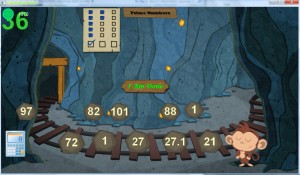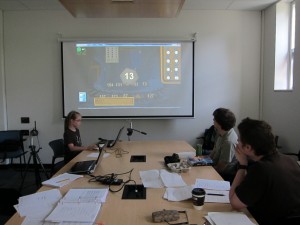Times are changing in our technologically connected world and the way we think about games needs to change too. Games do much more than entertain us and research shows how games offer inherently engaging environments for learning complex concepts that are difficult to teach, like sustainable development and global interdependence.
I am most intrigued by the growing genre of serious games about real-world issues, games that encourage youth to become more responsible citizens, including: Becoming a World Hero (UNICEF), eLections: Your Adventures in Politics (Cable in the Classroom), Freedom HIV/AIDS mobile phone games (House of Learning), Climate Challenge (BBC), Re-Mission (HopeLab), Whack TB (Families USA Global Health Initiative), A Force More Powerful (International Center on Nonviolent Conflict), Play the News (Impact Games), Stop Whaling (GreenPeace UK), 3rd World Farmer (IT University of Copenhagen), McDonald’s (MolleIndustria), Karma Tycoon (Do Something Inc), Planet Green Game (Starbucks), PeaceMaker (Impact Games), Nuclear Weapons (The Nobel Peace Prize), Free Rice (United Nations WFP) and Fatworld (ITVS). I advocate that these games for change offer important opportunities to reach and engage youth with the social, cultural, technological and political issues effecting their lives and futures.
According to a large-scale quantitative study on Teens, Games & Civics (Pew Research Center, 2008), 97% of all American teens play some kind of video game: “Game playing is universal, with almost all teens playing games and at least half playing games on a given day.”
Not only is gaming ubiquitous in the social and leisure lives of youth, it also occupies an increasingly important role in civic and political life:
76% of gamers help others while gaming,
52% report game-play where they think about moral and ethical issues,
44% report playing games where they learn about a problem in society, and
40% report playing games where they learn about a social issue.
With certainty, the growing genre of games for change matters and the research questions are piling up. How do we learn about social justice by playing video games designed for change? What is the pedagogical potential for long-term thinking and deep conceptual understanding beyond the simulated game-play? What are the relationships between in-game experiences and real-world engagement? How might the popularity of gaming ignite interest in civic and moral leadership? Can communities of gamers playing together learn to change their attitudes and actions at both the individual and collective levels of society? How might gaming contribute to student success in school settings by making learning more responsive, meaningful and relevant?
Games for change is a new frontier of unknown opportunities as research is just beginning to understand how simulated learning experiences transfer to the real world. While the potential for games is breathtaking, a positive advocation is not complete without a serious reminder of the dark side lurking within diverse gaming experiences. We are circularly implicated as gaming plays an increasingly vital role in our lives: we make the gaming technologies that then shape who we are and how we exist in the world.
If the games we design and play have considerable effect upon our moral and social identities, then we have an enormous responsibility to create games that are valued for their contribution to the quality of life that is worth living. The current reality, however, is that gaming is a medium with distinctly political and/or economic agendas, and most games (including educational games) are created in the absence of any coherent theories of learning without a solid underlying body of research. As such, it is no surprize that the vast majority of the top-twenty selling video games contain heavily disturbing and violent content (Entertainment Software Association, 2008).
Games are not culturally benign and a major concern is the equitable representation of gender, race, class, religion and sexuality—and not the further dissemination of white, western culture. Access for all is another challenge for the serious games movement and no matter how meaningful games are, there is no magical built in guarantee that everybody will be included. Therefore, collaborative efforts between students, parents, educators, governments, social organizations and game developers are important to enable disenfranchised youth to participate in the learning opportunities afforded by digital networks and gaming technologies.
We need to be mindful of both industry developments and academic research, especially as gaming is evolving from a rather vexed history to a much sweeter spot within the field of education. Now is not the time for passive acceptance, it is the time for critical thinking and continuous questioning about the roles that games can and should play. My marked enthusiasm is not that I believe the world’s problems will be solved by simply playing games, but rather that game experiences stimulate new ways of thinking and open up questions for discussion about deep-rooted issues of social justice. For example, how might the future of education be shaped by playing games for change in the post-industrial school? What kinds of games will we need to play to learn and practice the social, organizational and technological skills required for participation in a globalized culture? How might massively multi-generational teams of students and experts join together to explore and solve real-world challenges by making social-change games?
Our children look to us to teach and inspire them in meaningful ways, and it behooves us to seriously consider how playing games for change might help humanity move towards the goal of a more benevolent future for our planet earth home. Playing video games can create a socially-responsive space for learning as well as an authentic pedagogical place for developing the sustained engagement that will perhaps make today’s gamers the most socially conscious generation in history. Parents and teachers, I hope that you will play these meaningful games with your children: for fun and for change.
//PJ




